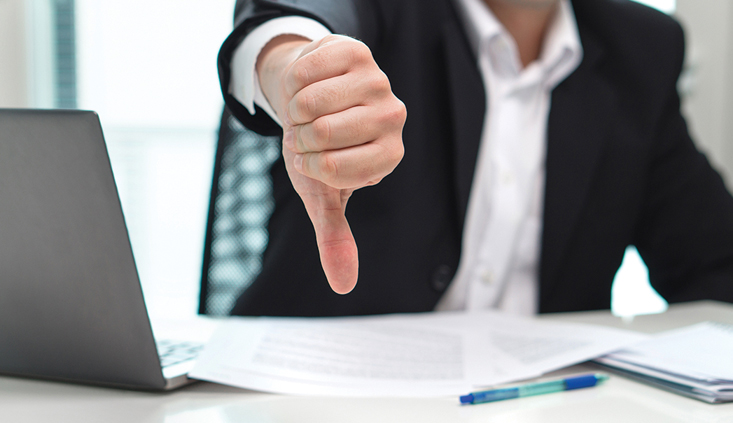They’re not paying your pre-litigation policy-limit demand. Now what?
Use the litigation process to give insurers every possible chance to do the right thing, and to force them when they don’t want to
You just received a rejection letter from an insurance company. They’re not paying your client’s pre-litigation policy-limit settlement demand.
You did everything right. You abided by the requirements of California’s new “Time-Limited Demands” statute – SB 1155, Chapter 3.2 – which went into effect January 1, 2023, and governs all demands made prior to the filing of a complaint or demand for arbitration. Your demand was: (1) in writing; (2) labeled as a time-limited demand; and (3) contained the following: (a) a 30-day time limit, or 33 days if transmitted by mail; (b) a “clear and unequivocal offer to settle all claims within policy limits, including the satisfaction of all liens;” (c) an offer for a complete release from the claimant for the liability insurer’s insureds from all present and future liability for the occurrence; (d) the date and location of loss; (e) the claim number; (f) a description of all known injuries; and (g) reasonable proof of the injuries. (Editor’s note: see article on CCP section 999 in this issue.)
You sent the insurance company everything – the traffic-collision report, property damage photos, injury photos, your client’s medical records, bills and future-treatment recommendations. Liability is clear, the damages clearly exceed the policy limit, but the carrier still claims they need more information. Now what?
This article is going to teach you how to use the litigation process, not only to give the insurance company every possible chance to do the right thing and pay up, but also to force them to do the right thing when they don’t want to. We are going to walk you through, step-by-step, some decisions you’ll need to make, from the case’s inception up through trial, to hold these multi-billion-dollar corporations accountable for the harm their clients have cause.
Venue – Where should you file?
The first hurdle you’ll need to jump through will be determining in what jurisdiction to file your case. These are rules which govern all California cases, even those in Los Angeles County now that filing in the PI Hub downtown is no longer possible.
First, you’ll need to determine which court has personal jurisdiction over the person or business or organization you want to sue. “The superior court in the county where the defendants or some of them reside… is the proper court for trial.” (Code of Civil Procedure (“CCP”) § 395).For defendant corporations (CCP § 395.5) and unincorporated associations (CCP § 395.2), personal jurisdiction refers to their principal place of business.
Next, you’ll need to determine which court has subject-matter jurisdiction over the legal issue or dispute you are suing about, since “[t]he county where the injury occurs or the injury causing death occurs … is [also] a proper court for trial.” (CCP § 395.)
Once you’ve determined the possible venues to file your lawsuit, you’ll need to decide which of them gives you the highest odds of obtaining the best possible result for your client. Are jurors in Beverly Hills going to relate to the plight of your destitute client as well as jurors somewhere else? Will a judge in a more rural area be as open to your somewhat novel legal theory as a judge in the city? Talk to fellow CAALA members, weigh out your possibilities and make a choice.
Ultimately, however, your job remains the same no matter in which venue your case winds up.
Written discovery – What should you ask for? And what should you do if they won’t comply?
The key to discovery is keeping your foot on the gas and not letting up. Make it clear to the opposing counsel that you are going to send them everything they need as soon as possible and that you expect the same from them.
When it comes to propounding, get your first round of written requests – Form Interrogatories, Special Interrogatories, Requests for Production, and Requests for Admission – served as soon as possible, making sure to wait until at least 10 days after the lawsuit is served. (CCP §§ 2030.020, subd. (b), 20311.020, subd. (b), 2033,020, subd. (b).)
In addition to basic fact-finding – determining the who, what, when, where and why – discovery requests should be narrowly tailored around the elements of your case that you need to prove at trial, and those that you’ll need in order to effectively oppose an MSJ or motion for summary adjudication. Use language directly from the CACI Jury Instructions, jury verdict forms, and caselaw when drafting your requests.
Also, keep in mind that these discovery requests and answers may one day be read aloud in trial, so use straightforward language that makes it clear what you are requesting. Sometimes a defendant’s refusal to fully, honestly answer a clear, straightforward request you’ve sent is actually a gift – because their ridiculous answer can later be read to a jury, who likely will not take kindly to such evasive, obstructive tactics by the defense.
That is not to say that you should accept substandard non-answers from the defense. You absolutely should not. Parties owe each other a duty to respond in good faith as best they can, and to answer as completely and directly as possible. (Code Civ. Proc., § 2030.220; Deyo v. Kilbourne (1978) 84 Cal.App.3d 771, 783.) A party cannot simply claim that they do not have enough information to answer a request without making a reasonable investigation into the matter by consulting with all the sources under their control, and laying out the steps they took to attempt to obtain the requested information.
If an interrogatory is requesting a document to be identified, it is improper for the responding party not to include a description of the document. (Hernandez v. Superior Court (2003) 112 Cal.App.4th 285, 293; Deyo, 84 Cal.App.3d at 783; Best Products, Inc. v. Superior Court (2004) 119 Cal.App.4th 1181, 1190.) It is also improper for a responding party to refuse to disclose the names and locations of relevant witnesses. (Code Civ. Proc., § 2017.010; Puerto v. Superior Court (2008) 158 Cal.App.4th 1242, 1249.) It is also improper for a party to claim that they cannot make an admission simply because it calls for an opinion; if an admission is possible, “the time for making it is during discovery procedures, and not at trial.” (Cembrook v. Superior Court (1961) 56 Cal.2d 423, 429.)
Finally, parties responding to requests for production of documents must either provide: (1) a statement that the party will comply with the request; (2) a statement of inability to comply; or (3) an objection. (CCP § 2031.210.) Parties must disclose whether they are responding in full or in part. (CCP § 2031.220.) There are obviously many other requirements, which responding parties must adhere to when properly responding to discovery, but these are a few to keep your eye out for.
If you receive deficient responses from defense counsel, do not hesitate to begin the meet-and-confer process. Send out written communications as soon as possible, explaining as clearly and thoroughly as possible why you believe you are entitled to further responses. Hopefully, you have a good working relationship with opposing counsel and they agree to provide you with further responses. If they don’t, then do not hesitate to bring your motion to compel and ask for sanctions. If you do not move to compel, you may later be precluded from arguing at trial that defense counsel failed to produce adequate responses. (New Albertsons, Inc. v. Superior Court (2008) 168 Cal.App.4th 1403, 1422.) Unless the deadline for the motion to compel is agreed to be moved in writing, it is due 45 days after the date the responses were served.
By staying on top of your discovery, sending out multiple rounds, supplemental requests, and moving to compel deficient answers, you are both gaining critical evidence, which will be necessary in proving your case, and demonstrating for the other side that you mean business, understand the law and will not be taken advantage of.
Oral discovery – Who should you depose?
Taking depositions of all the important players is critical to winning your case. You’re going to want to depose just about anyone who has any knowledge of what happened – the Defendant driver, witnesses, employees, persons most qualified on a range of topics (insurance, hiring and training, investigation, etc.), and anyone else you uncover throughout the discovery process with relevant information. Many Plaintiff’s lawyers wait to depose the Defendant until after they have the first round of defense discovery responses or until after an MSJ has been ruled on. Others set the Defendant’s deposition as soon as the 20-day hold after the service of the lawsuit has been completed. (Per CCP § 2025.210, subd. (b).)
Once expert discovery starts, make sure to depose all the defense’s experts. Also, remember to ask them at the end of their depositions if they have given all the opinions that they intend to offer at trial, so that they are not able to sneak in any new opinions for the first time at trial. (Kennemur v. State of California, (1982) 133 Cal.App.3d 907; Jones v. Moore (2000) 80 Cal.App.4th 557, 566.) Also, always videotape your depositions, after giving defense counsel appropriate notice under CCP § 2025.620, so that you can use those video clips at trial.
Defense counsel only gets one shot to depose the Plaintiff, so offer up your client as soon as possible to be deposed. (CCP § 2025.610, subd. (a).) By getting the deposition out of the way early, you have a better chance of catching opposing counsel unprepared. However, your client should never be unprepared. Make sure to prep them over several days, including the day before the deposition and hours before the deposition starts. They should be able to describe the collision, their medical treatment, and how the crash has affected their life. They should understand the importance of only answering the question asked of them, and not volunteering additional information. Most importantly, they need to understand the importance of the deposition and how much is riding on them telling the truth, as clearly and accurately as possible.
By taking thorough depositions, along with preparing your client for theirs, you are unveiling all the necessary information you and the insurance company need to resolve the case.
Demands and CCP 998 Offers to Compromise – When should you send them?
Policy-limit demands should be made early and often. Remember that policy- limit demands after the case has been filed do not need the 30-day time frame as they do in pre-litigation pursuant to SB 1155. Once the defense insurance carrier has all the relevant information, the time frame need only be “reasonable.” If the case is in trial for example, the time frame could be hours to be “reasonable.” Generally, we try to give 15 days for policy limit demands.
Another important consideration is to submit post-litigation demands pursuant to Code of Civil Procedure, section 998 Offers to Compromise. While there are many complexities to this section which could encompass an entire article, the important points for purposes of this discussion are to make sure you serve your 998s after the defense has enough information to reasonably evaluate the claim in order to make an informed decision. There are benefits to beating your 998 at trial, including collecting interest and costs (even experts costs), from the date the offer is sent. You can submit multiple 998s and all remain in effect. It’s an excellent tool to get cases resolved and set up significant post-trial consequence, should defense fail to accept your 998. The defense, of course, can also serve 998 Offers to Compromise which have the same penalties for plaintiffs, should they get a verdict less than the amount of the defense 998.
Practice Pointer: Keep in mind that CCP 998 Offers to Comprise are not the same as policy-limit demands. For example, a 998 offer for a penny more than the policy would not “open” a policy. Use both tools, as they are each extremely effective in getting cases resolved.
Mediation – When and how should you set them?
Most cases are destined for mediation in one form or another following litigation. Mediations can be through the court, sometimes through settlement conferences, but often the mediations are through private ADR providers. Both sides need to agree to a mediator, and date and time for a mediation. The high-end mediators are booked months in advance, so you should be thinking about mediation early on in your case. It’s often a good idea to insist upon the defense putting money on the table before you agree to any mediation. This helps limit the mediation being used as a tool to beat down and low-ball your client. Mediations are most useful after discovery and expert depositions are completed, but it’s really case-specific, meaning they are often useful at any stage of a case, even before filing.
Should these efforts fail to get your case resolved, it’s on to trial. With “the hub” no longer in service in Los Angeles County, you need to be even more mindful of your trial courts local rules and how your particular judge runs their courtroom. Witness lists, exhibit lists, jury instructions all need to be jointly prepared with defense and timely filed, along with timely filed motions in limine and trial briefs. Once you pick a jury, the real fun begins. Good luck and go get ’em!
Gene Sullivan

Gene Sullivan of Sullivan & Sullivan, in the South Bay, has built a reputation over 20 years as a fierce litigator, winning multiple 7-figure verdicts. He specializes in serious injury and death cases with a special interest in motorcycle accidents.
Ryan Medler

Ryan Medler is a trial attorney at Sullivan & Sullivan, focusing his practice on litigating catastrophic injury and wrongful death cases.
Copyright ©
2026
by the author.
For reprint permission, contact the publisher: Advocate Magazine

